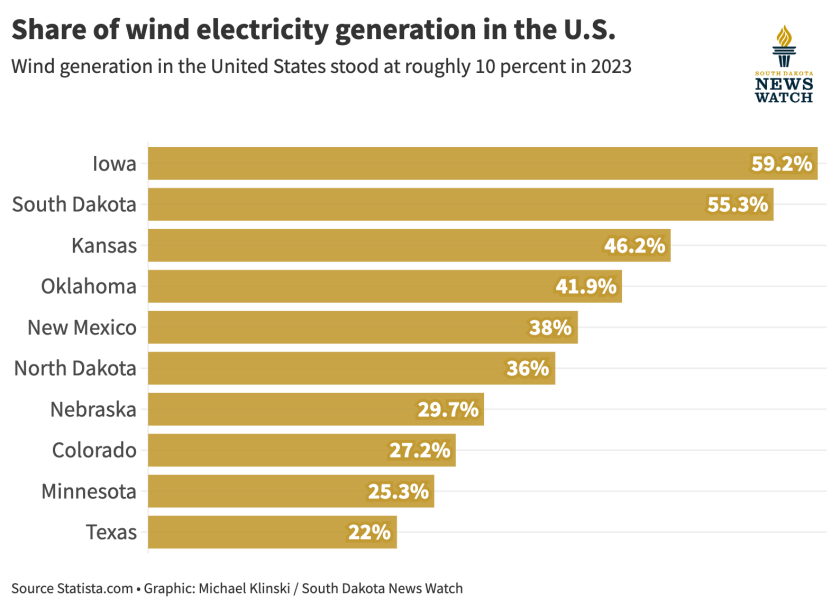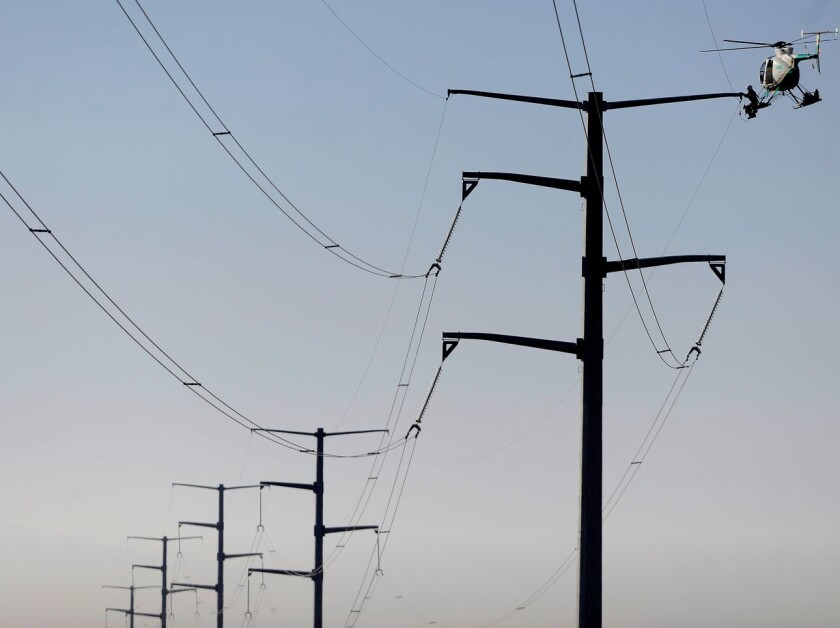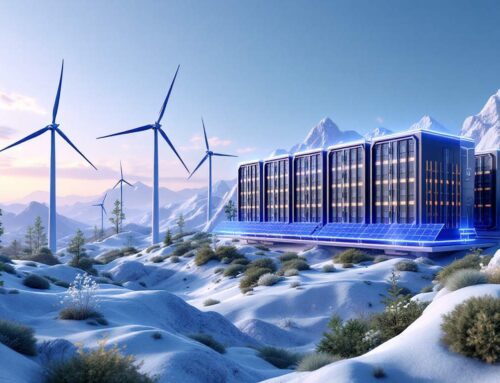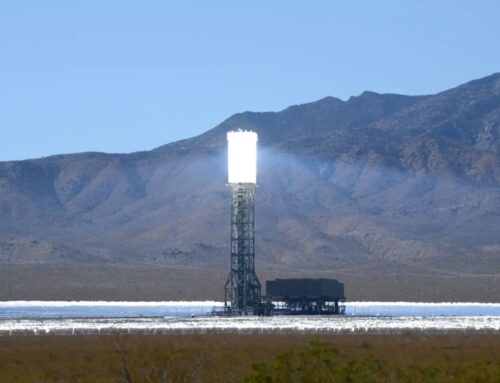Reversal of US energy agenda sparks friction between states
April 6, 2025
Changes to climate policy under President Donald Trump’s administration have sharpened Upper Midwest debates about the reliability of renewable energy and the separation of state and federal interests.
One point of agreement is that winning the White House means controlling the Environmental Protection Agency (EPA), a federal regulatory body that maintains and enforces environmental laws.
Lee Zeldin, Trump’s pick to run the EPA, has announced plans to dramatically reduce staff and reverse policies from the Joe Biden administration involving the oversight of coal-fired power plants, oil and gas development and water quality standards.
The deregulation is of keen interest to energy officials in Republican-led South Dakota and heavily Democratic Minnesota, where differences in climate policy have sparked border clashes over how pushing clean energy to reduce carbon emissions impacts the electrical grid.
The Minnesota Legislature passed a law in 2023 requiring all electric utilities in the state to produce only carbon-free energy by 2040 using sources like solar, wind, hydroelectric and nuclear power.
That law was an offshoot of Biden administration EPA rules requiring coal plants operating beyond 2039 to reduce greenhouse gas emissions by 90% by 2032, which critics saw as shutting down the industry.
Zeldin’s agency has rolled back those rules, inspired by Trump’s March 17 declaration on social media that he is “authorizing my Administration to immediately begin producing Energy with BEAUTIFUL, CLEAN COAL.”

Erin Woodiel / Argus Leader
Chris Nelson, a Republican member of the South Dakota Public Utilities Commission, said reversing coal plant regulations is good news for South Dakota and other states focused on the sustainability of the electricity grid and avoiding blackouts.
“The math didn’t add up with those greenhouse gas limitation rules,” Nelson told News Watch. “They simply could not replace all of those plants quickly enough (with other energy sources) to maintain reliability of the grid. So the Trump administration rolling back those particularly damaging rules was very helpful.”
Xcel Energy to retire coal plants by 2030
Not everyone shares that opinion.
The EPA’s actions face court challenges as clean-energy groups navigate federal and state environmental laws in a changing legal landscape.
The U.S. Supreme Court last year struck down the landmark 1984 Chevron “deference” doctrine, which required courts to defer to reasonable agency interpretations of ambiguous statutes.
Those interpretations are now up to the courts to decide. Democratic-leaning states are forging ahead with climate-based policies regardless of EPA rollbacks, using utility regulation as a tool to keep energy companies in line.

Minneapolis-based Xcel Energy, whose 3.7 million electrical customers include about 100,000 South Dakotans, is sticking with a plan to retire its coal-fired power plants by 2030 as part of an integrated resource plan approved by the Minnesota Public Utilities Commission in February in accordance with state law.
The plan includes replacing coal with “wind, solar and storage solutions” while also building a new natural gas plant in 2028 as a way to address capacity needs.
Natural gas, which replaced coal as the nation’s largest energy source in 2016, emits about half as much carbon dioxide as coal, according to the U.S. Energy Information Administration.
SD 9th in energy consumption per capita
The Xcel announcement came despite criticism from the South Dakota PUC, which questioned the company’s ability to pivot from fossil fuels at that pace without compromising reliability and affordability for customers.
South Dakota ranks ninth among U.S. states in energy consumption per capita, with 34% of households using electricity to heat their homes during frequently harsh winters. Nearly half (48%) use natural gas, with propane at 14%.
The PUC’s concerns were laid out in a 2024 letter to Xcel signed by Republican commissioners Nelson, Gary Hanson and Kristie Fiegen.

“Evidence is mounting that the premature closures … will elevate the risk of electricity outages particularly in tight load hours, including hours of extreme cold and extreme heat, as well as those hours when wind generation is low,” the letter stated. “These events are likely to pose a threat to life and property.”
‘We’re the tail trying the wag the dog’
Xcel’s decision to close coal plants despite South Dakota PUC warnings shows the challenge of trying to influence policy involving companies under the sway of different state laws and consumer interests.
“One of the difficulties we have is that South Dakota represents 5% to 6% of Xcel’s entire system,” said Nelson. “We are literally the tail trying to wag the dog on some of these decisions.”
Some utility companies are advocating a more measured pace on clean energy. Minnesota’s PUC clashed with Otter Tail Power over its decision to amend its long-range plan to push back closures of coal plants – including Big Stone near Milbank, in northeast South Dakota – until at least 2040.
The Minnesota PUC approved Otter Tail’s resource plan last summer after concessions that included the company no longer using its North Dakota-based Coyote Station plant for Minnesota customers beyond 2031.
Will wind energy policy hurt South Dakota?
Despite leaning on fossil fuels to keep the lights on in extreme conditions, South Dakota has harnessed the state’s wind power as an alternative energy source.
In 2023, South Dakota’s wind energy production accounted for more than half (55%) of the state’s in-state net power generation, a larger share than in all other states except Iowa, according to the U.S. Energy Information Administration.
The state’s other primary power sources include hydroelectric (21%), natural gas (14%) and coal (9%). Solar was less than 1% of the power generated (0.3%).

(Photo: Argus Leader)
Increased wind energy production nationally runs counter to the direction of the EPA and Trump, who has criticized the efficiency of turbines and told supporters that “we’re not going to do the wind thing” at a rally shortly after taking office.
So far, the administration’s actions are aimed at offshore wind development, which rely on access to federal waters. It’s not clear how the EPA’s actions will impact South Dakota’s 24 active wind farms, which provide tax revenue and job creation for local communities.
“The actions that we’ve seen the administration take thus far as it relates to wind have been exclusively related to offshore wind projects,” said Nelson. “We’ve not seen any indication that there’s going to be any activity for turbines that might be located in South Dakota.”
— The Associated Press contributed to this story, which was produced by South Dakota News Watch.
Search
RECENT PRESS RELEASES
Related Post




